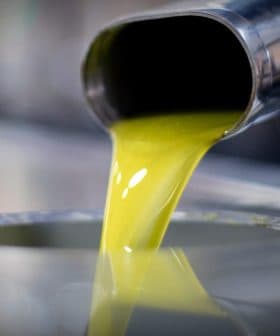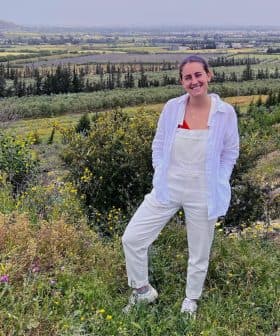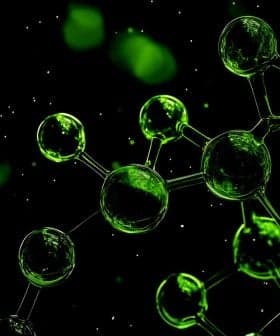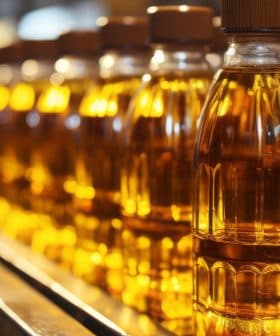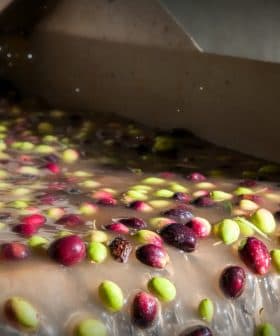 10.7K reads
10.7K readsBasics
World's Healthiest Olive Oil? The Jury's Still Out.

Boundary Bend’s Cobram Estate California Select blend was named the “healthiest olive oil in the world” at a competition in Spain due to its high polyphenol and oleocanthal levels. While high phenolic content is being marketed by some companies for competitive advantage, experts are unsure if more polyphenols necessarily make an olive oil healthier, and more research is needed to determine optimal levels for health benefits.
The Australian olive oil producer Boundary Bend recently distributed a press release that said its Cobram Estate California Select blend was named the “healthiest olive oil in the world” at a competition in Spain that measured the total polyphenol and oleocanthal levels in submitted entries.
It is safe to conclude that EVOOs containing phenolics are more healthy than those without them, but it is unlikely that more is always better.
High phenolic content is being marketed by some companies to gain a competitive advantage in a crowded olive oil marketplace. Forbes Magazine recently wrote, “Olive oil can be sold as much as much as $150, packaged in a nice liter in popular sites, provided that it is certified to contain the right phenols — chemical compounds, which according to EU research contain health-protecting properties.”
“This is exciting news as we competed against the world’s greatest oils from Spain, Italy and Greece,” Cobram Estate’s technical director, Leandro Ravetti, said. “We are proud that our simple commitment to quality and freshness has gained California oil the recognition it deserves.”
While few would argue that Cobram Estate has established itself among the most awarded olive oil companies in the world, the “healthiest olive oil” distinction raises an important question: How can we know if one olive oil is healthier?
The competition, called the World Best Healthyextra virgin olive oil Contest, in Málaga was held in May and did not release the number of contestants in its brief presentation of the results. It did say that entries were rated by their total polyphenols, oleocanthal levels and “most balanced fatty acid profile.”
Phenolic compounds, which include oleocanthal, are antioxidants in extra virgin olive oil that have been shown to prevent degenerative ailments such as cancer and cardiovascular diseases.
But is olive oil with more polyphenols necessarily healthier than one with modest amounts? Aspirin, for example, can prevent heart attacks when taken daily. After years of research and million-dollar studies, 81 milligrams is prescribed as the ideal amount in a daily regimen. What is the ideal number for phenols?
Gary Beauchamp, the president emeritus of the Monell Chemical Senses Center in Philadelphia, who discovered oleocanthal, said we just don’t know the answer yet.
“It is safe to conclude that EVOOs containing phenolics, and particularly containing oleocanthal (amounts of which can roughly be identified by the pungency or throat irritation of an oil), are more healthy than those without them, and it is probably the case that generally those with more are likely to be better than those with much less. But it is unlikely that more is always better.”
Antioxidants in pill form, for example, have been criticized by some medical professionals who say they could be too much of a good thing. “You get to a point, and sometimes early, that the high doses become hazardous,” Jim Kehrer of the pharmacy department at the University of Alberta in Edmonton said in an interview with CBC News.
“Advertisers have put forth the idea that a little is good, more is better and a lot is great but that isn’t really correct,” said Kehrer, who has been researching the effects of free radicals since the 1970s, according to CBC.
After all, Beauchamp reasoned, too much water can be toxic, “so it is reasonable to assume that there is a level of phenolics that would not be healthy to consume. We do not know what these optimal levels are because there are almost no human experiments directed at investigating this important question.”
And it could be that the picture is much more complicated than that.
“It is also likely that how oleocanthal and other phenols are consumed — whether they may have synergistic effects if taken together rather than as single compounds or whether they may be more effective when consumed with other foods than alone — will influence their efficacy and their optimal amounts,” Beauchamp said.
“I think there are enough studies to say that higher levels have more benefit than lower levels,” agreed Mary Flynn, the Brown University nutritionist who developed the Plant Based Olive Oil Diet. “But what is the cutoff?”
“Oleocanthal is a natural anti-inflammatory agent, but what amount is needed? And do you need a level that is too high for people to tolerate? We don’t know which or what amount of the specific phenols have the most benefit.”
“There is a definite need for more research to figure this out,” said Flynn.
Experts agree it may be a long time before we know that higher levels of phenols and other components in olive oil are better for us, or what the optimal numbers might be. Frequency- or how often we consume these nutrients- could even be more important than potency. In that case, the best-tasting olive oil would be the better choice.
In the meantime, much like Dr. Oz’ “fridge test” or Rachael Ray’s clarity check, “world’s healthiest” claims risk adding more smoke to the already abundant consumer confusion on matters of olive oil quality and health benefits.


